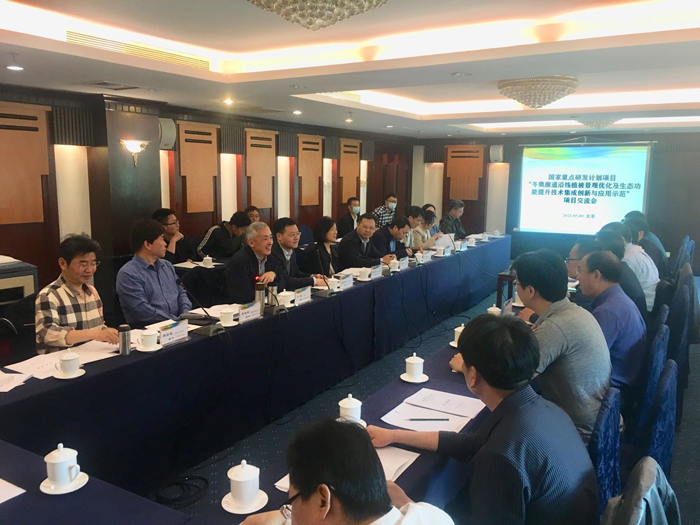
基于知识表达模型的景观无废设计
编号
lyqk011066


中文标题
基于知识表达模型的景观无废设计


作者单位
同济大学建筑与城市规划学院 上海 200092


期刊名称
中国城市林业


年份
2023


卷号
21


期号
3


栏目名称
专题:城市环境污染与净化


中文摘要
城市景观建设过程中产生了大量的建筑与园林废弃物,亟需针对性的理论研究以实现景观设计与废弃物处理的有机融合。文章首先借鉴FBS与公理化设计模型建立以无废原型为核心的需求-目标-原型-途径的无废知识表达模型;其次通过NVivo软件对113个无废设计案例进行文本分析,得到系统的景观无废设计4大策略,即方案设计、设计技术、材料应用和组织方式,并构建景观无废设计理论框架;最后指出景观无废设计的发展方向和研究重点,为推进景观无废设计理论与实践提供参考。


基金项目
上海市哲学社会科学规划一般课题全生命周期理念下城市绿地无废建设的绩效评估与优化策略(2021BCK004);上海市2022年度科技创新行动计划软科学研究项目循环经济视角下无废城市建设智能化技术创新图谱研究(22692106800)


英文标题
Zero-waste Landscape Design Based on Knowledge Representation Model


作者英文名
Dai Daixin, Liu Meiqi, Hou Zhaowei


单位英文名
College of Architecture and Urban Planning, Tongji University, Shanghai 200092, China


英文摘要
A large amount of waste has been generated from building and gardening during the urban landscape establishment. There is an urgent need to carry out targeted theoretical research and achieve the organic integration of landscape design and waste disposal. Firstly, FBS and axiomatic design model are used to establish a zero-waste knowledge representation model of demand-goal-prototype-approach with zero-waste prototype as the core. Secondly, through the text analysis of 113 zero-waste design cases with NVivo software, four strategies of zero-waste landscape design are summarized, namely scheme design, design technology, material application and organization mode, based on which the theoretical framework of zero-waste landscape design is constructed. Finally, the development direction as well as the research focus on zero-waste landscape design is proposed in order to provide a reference for promoting its theoretic development and practice.


英文关键词
landscape design;zero-waste design;qualitative analysis;knowledge representation model


起始页码
1


截止页码
6


投稿时间
2023/2/9


作者简介
戴代新(1975-),男,博士,副教授,博导,教育部生态化城市设计国际合作联合实验室景观空间分实验中心主任,研究方向为景观遗产与文化景观、景观再生与可持续设计。E-mail:urbanplanning@126.com


通讯作者介绍
侯昭薇(1996-),女,硕士,研究方向为风景园林规划设计、景观无废设计。E-mail:18017982107@163.com


E-mail
18017982107@163.com


DOI
10.12169/zgcsly.2023.02.09.0003


参考文献
[1] WILSON D C,RODIC L,MODAK P,et al.Global waste management outlook[M].Nairobi:United Nations Environment Programme,2015.
[2] 新华社.中华人民共和国国民经济和社会发展第十四个五年规划和2035年远景目标纲要[EB/OL].(2021-03-13)[2023-05-24].http://www.gov.cn/xinwen/2021-03/13/content_5592681.htm.
[3] 张占仓,盛广耀,李金惠,等.无废城市建设:新理念 新模式 新方向[J].区域经济评论,2019,39(3):84-95.
[4] HANNON J,ZAMAN A U.Exploring the phenomenon of zero waste and future cities[J].Urban Science,2018,2(3):90.
[5] KAMALI M,HEWAGE K,MILANI A S.Life cycle sustainability performance assessment framework for residential modular buildings:aggregated sustainability indices[J].Building and Environment,2018,138(4):21-41.
[6] VAN EWIJK S,STEGEMANN J A.Limitations of the waste hierarchy for achieving absolute reductions in material throughput[J].Journal of Cleaner Production,2016,132:122-128.
[7] 朱建宁.促进人与自然和谐发展的节约型园林[J].中国园林,2009,25(2):78-82.
[8] 宫明军.园林绿化废弃物收集点的选址规划:以上海市静安区为例[J].中国城市林业,2014,12(3):50-52.
[9] 戴代新,李明翰.美国景观绩效评价研究进展[J].风景园林,2015,114(1):25-31.
[10] 孟小燕,王毅.我国推进无废城市建设的进展、问题及对策建议[J].中国科学院院刊,2022,37(7):995-1005.
[11] GERO J S,KANNENGIESSER U.The situated function-behaviour-structure framework[J].Design Studies,2004,25(4):373-391.
[12] SUH N P.Axiomatic design:advances and applications[M].New York:Oxford university press,2001.
[13] 费凡,岳邦瑞,聂静,等.河流型城市湿地公园生态-审美冲突的表征及对策[J].中国城市林业,2023,21(2):91-97.
[14] 周浩波,李凌霄.高校教师工作满意度影响因素研究:基于48篇文献的Nvivo质性分析[J].现代教育管理,2019,356(11):69-73.
[15] 王光明,佘文娟,宋金锦.基于NVivo10质性分析的高效数学学习心理结构模型[J].心理与行为研究,2014,12(1):74-79.
[16] 田振华,熊华夏.建构、解构与重构:校长视角下农村小学全科教师的未来走向:基于NVivo11.0访谈资料的编码分析[J].当代教育科学,2020(4):75-79.
[17] 武照亮,靳敏,苏明明,等.无废城市建设背景下社区参与程度及影响因素分析:基于威海市634份居民调查数据[J].环境工程学报,2022,16(3):765-774.
[18] PIETZSCH N,RIBEIRO J L D,DE MEDEIROS J F.Benefits,challenges and critical factors of success for Zero Waste:a systematic literature review[J].Waste Management,2017,67:324-353.
[19] MCDONOUGH W,BRAUNGART M.Cradle to cradle:remaking the way we make things[M].New York:North point press,2010.
[20] 罗仕鉴,朱上上,应放天,等.产品设计中的用户隐性知识研究现状与进展[J].计算机集成制造系统,2010,16(4):673-688.
[21] 刘征.面向设计情境的知识获取与演化[J].机械设计,2015,32(1):110-113.


PDF全文
浏览全文


-
相关记录
更多
 打印
打印
